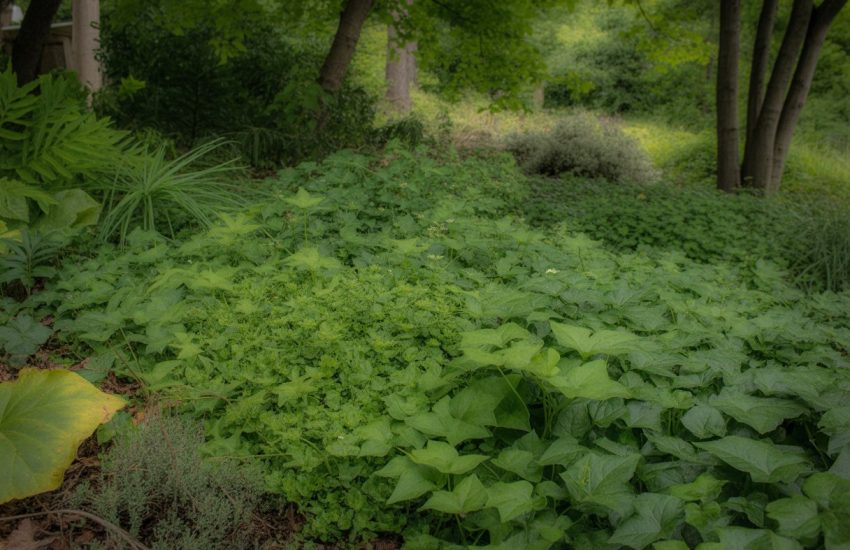Best Compost Materials for Arizona: Optimal Organic Choices for Arid Climates
Composting in Arizona needs materials that can handle the relentless heat and dryness. The best compost materials balance moisture with nutrients and break down fast, even when it’s scorching.
Grass clippings, vegetable scraps, coffee grounds, and dry leaves top the list for effective composting here.
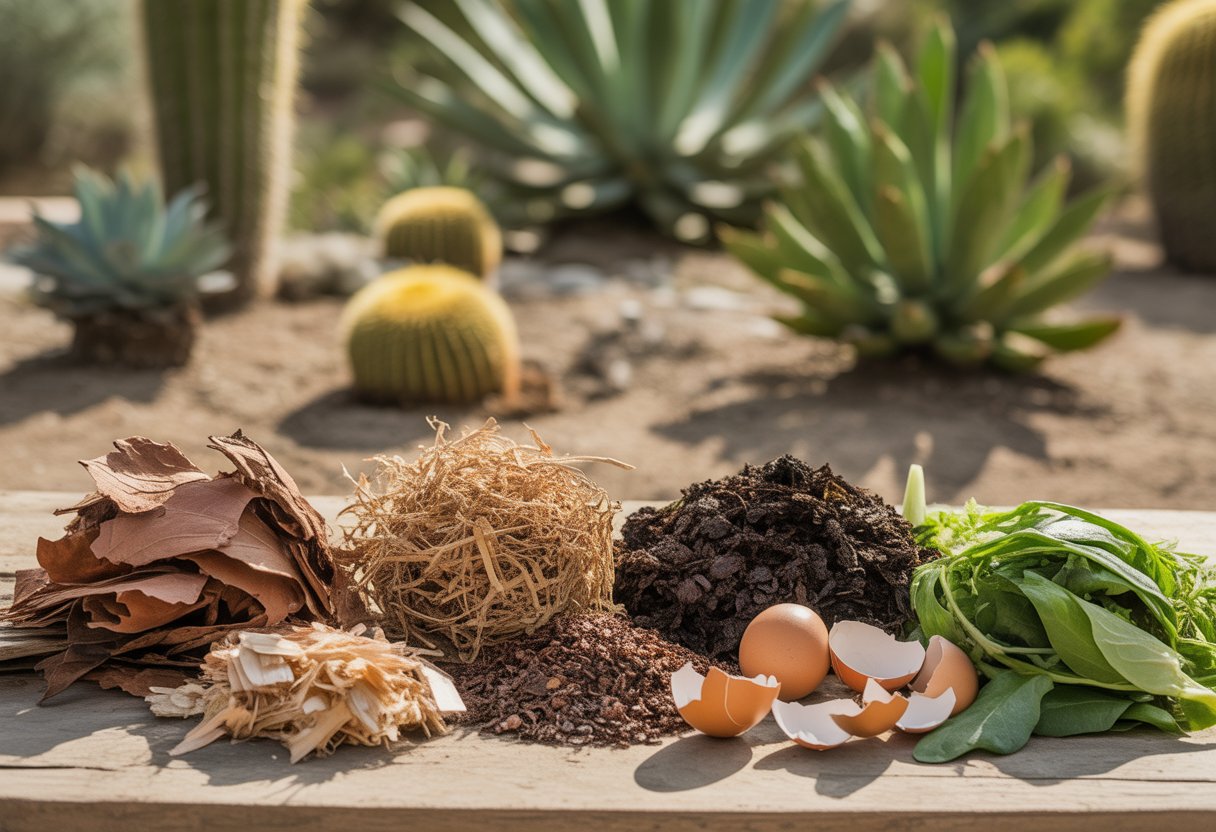
Local plant trimmings and cardboard bring extra carbon and structure to the mix. If you skip materials that hold too much water or dry out super quick, it’s easier to keep the pile just right.
Key Compost Materials for Arizona Gardens
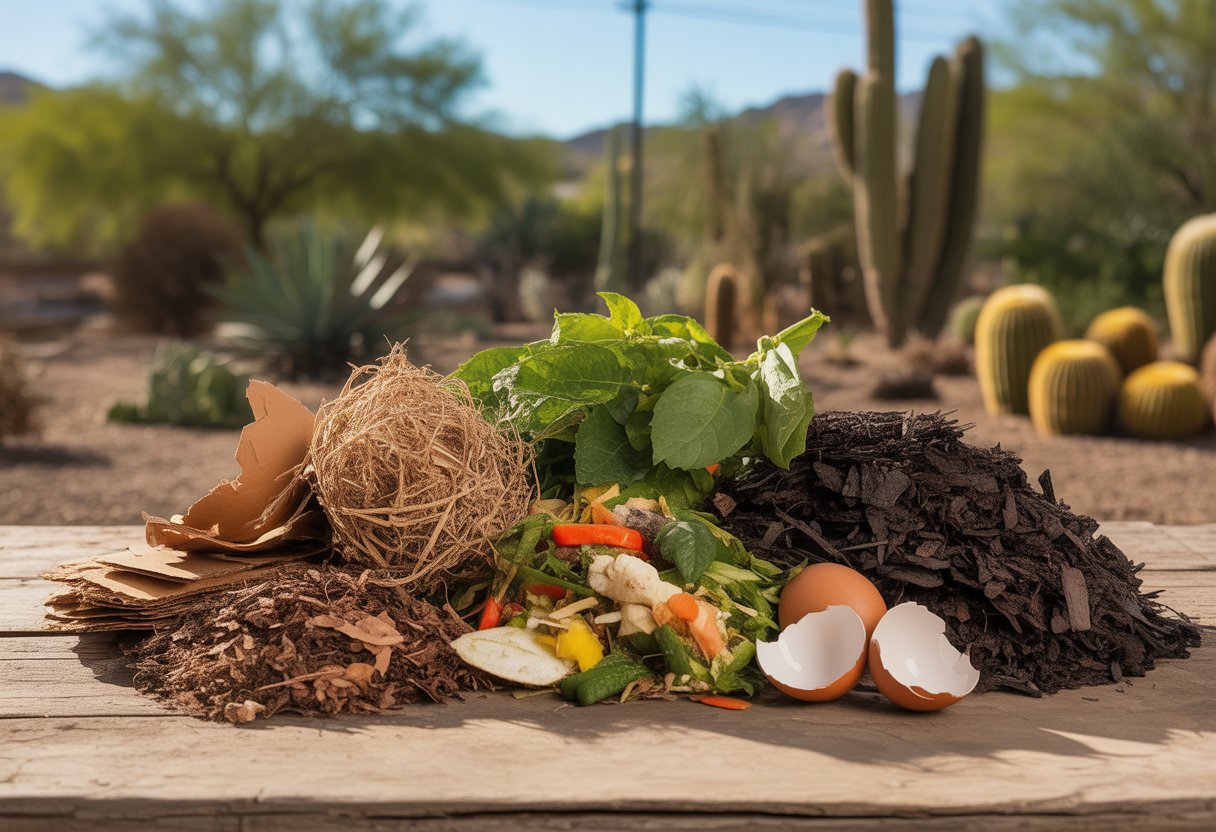
Arizona composting works best with ingredients that match the region’s heat and often nutrient-poor soil. Both nitrogen-rich and carbon-rich materials matter for balanced compost that actually improves your dirt.
Green Materials: Nitrogen-Rich Inputs
Green stuff brings in nitrogen, which fuels microbial activity. For Arizona, the usual suspects are grass clippings, vegetable scraps, coffee grounds, and fresh yard waste.
Grass clippings from native or drought-tolerant lawns break down fast and don’t swamp the pile with moisture. Veggie scraps add nitrogen and a few bonus nutrients. Coffee grounds—well, they’re packed with nitrogen and give the compost a nice texture.
It’s probably smart to skip big loads of fresh manure or anything too wet. Those can make things smell or slow everything down in Arizona’s heat. Getting the right mix of greens and browns keeps things airy and not too wet.
Brown Materials: Essential Carbon Sources
Browns are all about carbon—energy for compost microbes. In Arizona, dry leaves, wood chips, straw, and pine needles do the job.
Dry leaves and wood chips add bulk and slow things down a bit, which helps when everything dries out so fast. Pine needles bring a little acidity, handy for certain beds, but you’ll want to mix them with more neutral stuff.
Twigs and dead yard debris work well as brown materials too. If you blend browns and greens, you’ll keep the carbon-to-nitrogen ratio steady and the pile humming along.
Optimizing Organic Matter for Desert Soil
Desert soil needs compost that’s got both nitrogen and carbon to bump up organic matter and hold onto water. Arizona gardeners usually mix greens and browns about half-and-half, tweaking it as they go.
Adding compost to veggie beds helps the soil hold together and roots dig in deeper. Out here, you’ve got to keep the pile moist—but not soggy—or things grind to a halt.
If you stick with drought-tolerant plant scraps, avoid super wet waste, and toss in some chunky browns, you’ll end up with compost that actually makes a difference in your garden.
Balancing Nutrients and Soil Conditions
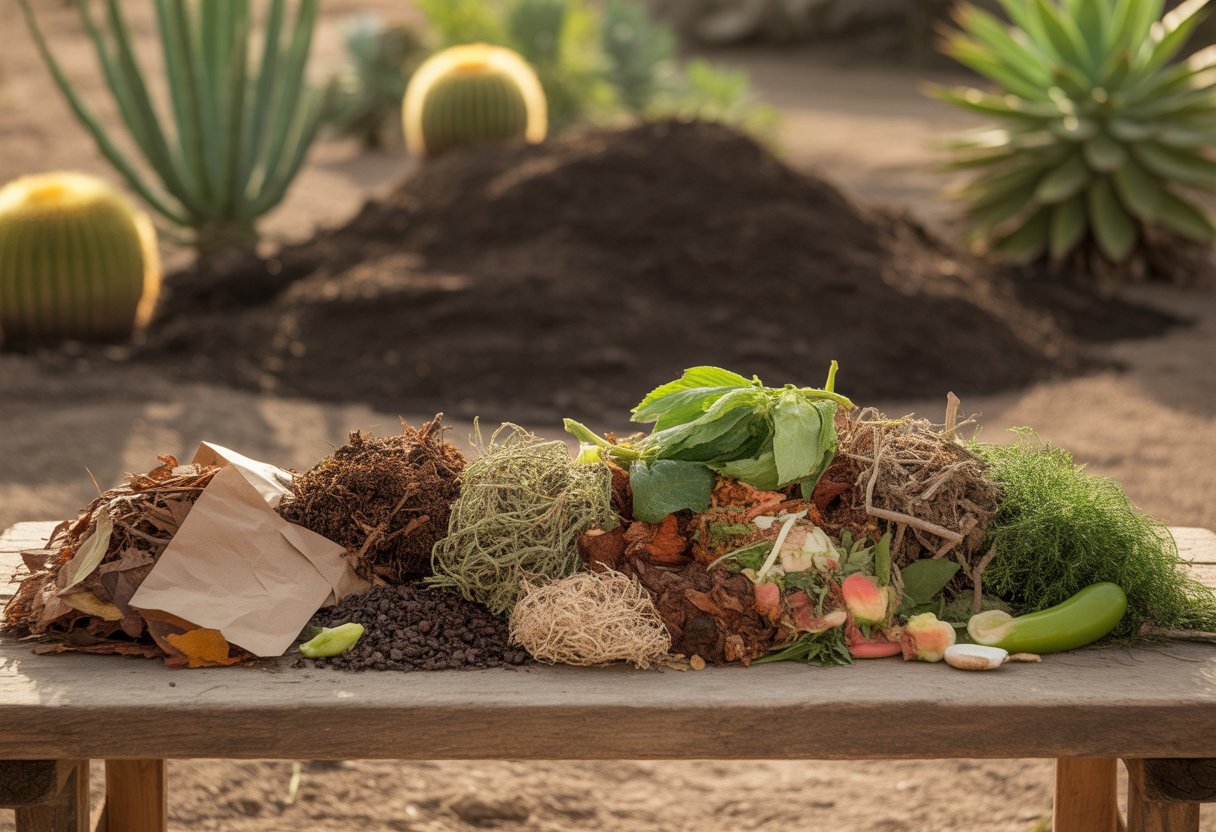
Getting the nutrient balance right makes compost work better in Arizona. You want to keep an eye on nitrogen, phosphorus, and potassium, since these boost plant growth. Adjusting what you add based on alkaline soil and pH can help with nutrient uptake and keep microbes happy.
Managing Nitrogen, Phosphorus, and Potassium
Compost needs a decent mix of nitrogen (N), phosphorus (P), and potassium (K). Nitrogen helps leaves and stems, phosphorus is for roots, and potassium toughens plants up against drought.
Arizona’s dry soils often need more nitrogen, so you might toss in fresh manure or green mulch. Phosphorus and potassium mostly come from old plant bits and minerals already in the dirt.
Most folks shoot for a C ratio around 30:1. More nitrogen? You’ll get smell. Not enough? The pile stalls. Bone meal or rock phosphate can add phosphorus, and wood ash brings in potassium—just check your soil first.
Adapting to Alkaline Soil and Soil pH
Arizona soils tend to be alkaline, often with a pH over 7.5. That messes with nutrient solubility and slows down some microbes. Compost materials like pine needles or oak leaves can nudge the pH down over time.
Try not to overdo it with wood ash or anything loaded with lime, since those push the pH up even more. Manure-rich compost boosts good microbes, but don’t go overboard or you’ll get too much nitrogen.
If you keep tabs on soil pH, you can pick compost ingredients that steer it back to neutral. Slightly acidic or neutral compost makes nutrients easier for plants to grab and keeps the microbe party going.
Enhancing Composting Efficiency in Arizona’s Climate
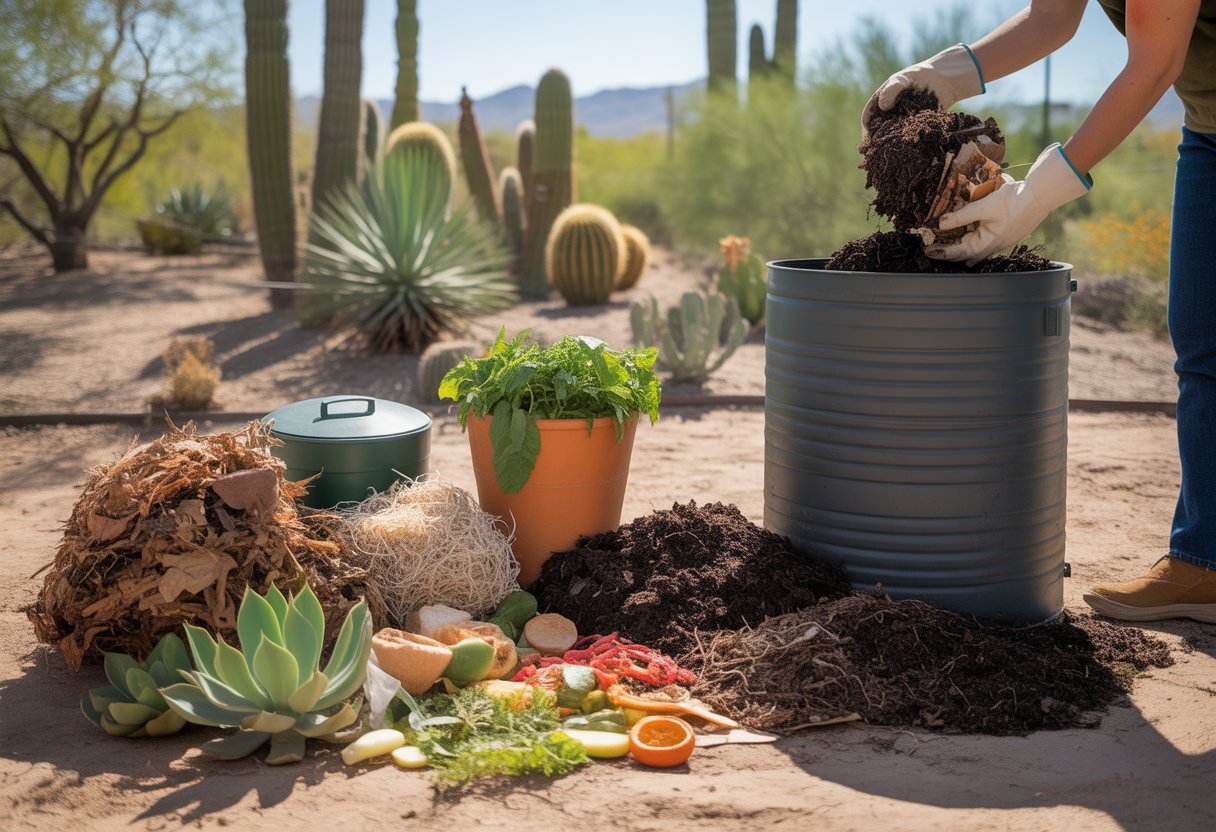
Composting fast and well in Arizona comes down to a few things: plenty of air, just enough moisture, and keeping microbes active. If you get it right, you’ll end up with nutrient-rich humus that actually helps your soil.
Maintaining Aerobic Conditions for Decomposition
Microbes need oxygen to break stuff down. In Arizona, you’ve got to turn the pile now and then to keep air moving.
If the pile gets packed down, it turns anaerobic and starts to stink. Toss in coarse stuff like wood chips or straw to help air flow, especially if you’re dealing with clay soil that holds water but not much air.
Good airflow also keeps the pile in the sweet spot for heat—somewhere between 130°F and 160°F. That’s hot enough to break things down fast and kill weed seeds or bad bugs.
Improving Moisture Retention in Dry Environments
Moisture is a big deal for compost microbes, but Arizona air dries things out in no time. It’s a bit of a juggling act.
Toss in grass clippings or food scraps to keep things damp. Covering the pile with a tarp helps slow down evaporation.
Materials like coconut coir or shredded leaves hold water without turning everything soggy. If you get the moisture right, microbes stay busy, and your compost ends up holding water better when you add it to the garden.
Utilizing Finished Compost for Plant Growth
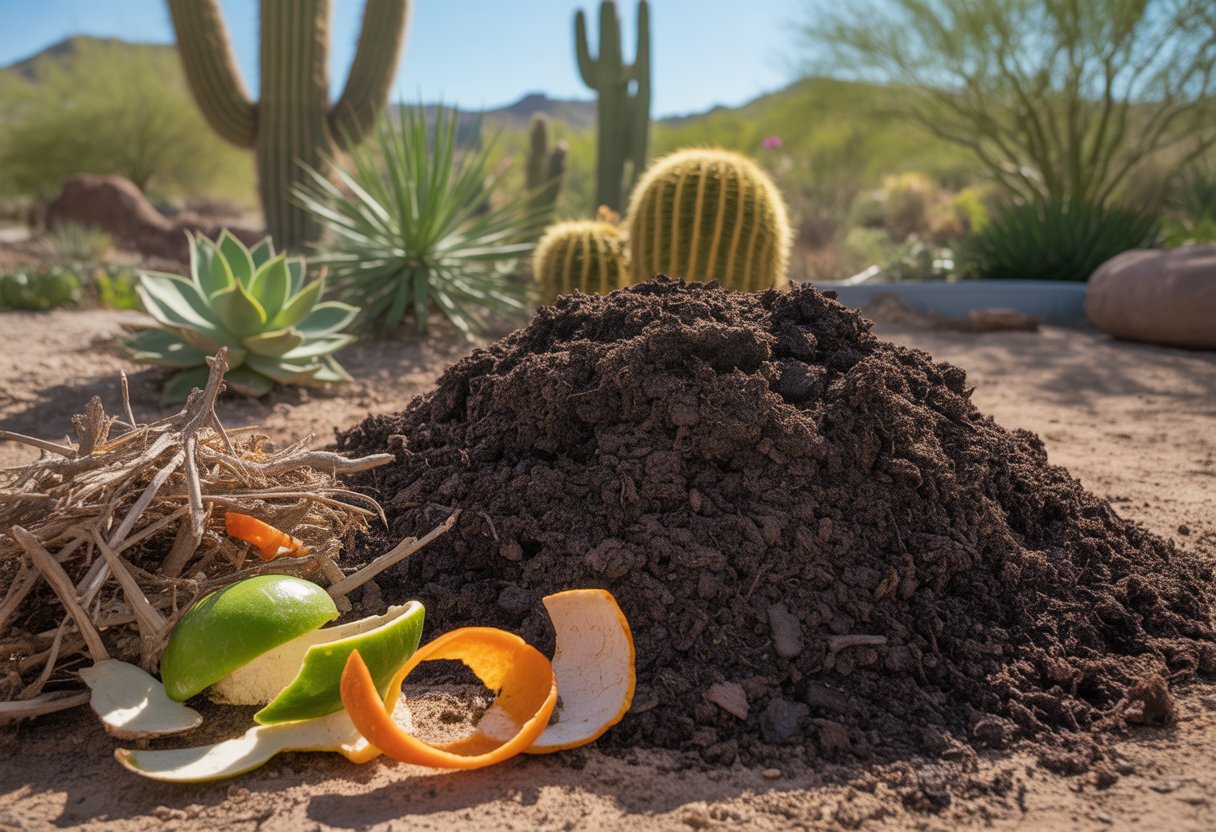
Finished compost makes a real difference in Arizona gardens. It helps soil hold water and nutrients, which is exactly what your plants need to survive the heat.
Benefits for Vegetable Gardens and Landscaping
When you work finished compost into the soil, you add nutrients and organic matter right where roots can use them. That extra moisture retention cuts down on watering, which is a relief out here.
In vegetable beds, compost encourages strong roots and better yields by delivering nitrogen, phosphorus, and potassium in a form plants can actually use. It also boosts good microbes, so plants fend off pests and diseases better.
For landscaping, compost breaks up tough, compacted soils that are all too common in dry regions. It supports drought-tolerant plants by adding humus that hangs onto both water and nutrients—something Arizona gardens always need more of.
Incorporating Worm Castings and Manure
Worm castings are packed with plant-available nitrogen and trace minerals. They boost soil biology by encouraging beneficial microbes.
These castings also help soil texture, making it easier for roots to push through. I’ve noticed they can really make a difference, especially if your soil feels lifeless.
Manure, as long as it’s well-composted, adds organic matter and nitrogen. It helps form humus and should get mixed with finished compost to avoid burning plants.
Honestly, tossing manure straight onto the garden isn’t the best idea—it’s better to blend it in for a steady, slow-release feed.
Both worm castings and manure work well with finished compost. You’ll end up with richer soil that actually supports strong plant growth.
In Arizona’s tough soils, these amendments can really help with nutrient cycling and holding onto moisture. Why not give them a shot and see what happens?

